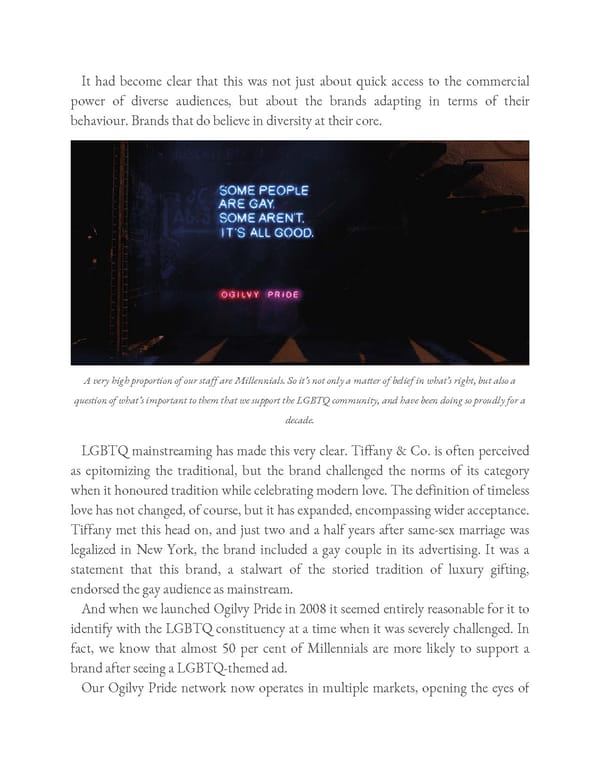It had become clear that this was not just about quick access to the commercial power of diverse audiences, but about the brands adapting in terms of their behaviour. Brands that do believe in diversity at their core. A very high proportion of our staff are Millennials. So it’s not only a matter of belief in what’s right, but also a question of what’s important to them that we support the LGBTQ community, and have been doing so proudly for a decade. LGBTQ mainstreaming has made this very clear. Tiffany & Co. is often perceived as epitomizing the traditional, but the brand challenged the norms of its category when it honoured tradition while celebrating modern love. The definition of timeless love has not changed, of course, but it has expanded, encompassing wider acceptance. Tiffany met this head on, and just two and a half years after same-sex marriage was legalized in New York, the brand included a gay couple in its advertising. It was a statement that this brand, a stalwart of the storied tradition of luxury gifting, endorsed the gay audience as mainstream. And when we launched Ogilvy Pride in 2008 it seemed entirely reasonable for it to identify with the LGBTQ constituency at a time when it was severely challenged. In fact, we know that almost 50 per cent of Millennials are more likely to support a brand after seeing a LGBTQ-themed ad. Our Ogilvy Pride network now operates in multiple markets, opening the eyes of
 Ogilvy on Advertising in the Digital Age Page 126 Page 128
Ogilvy on Advertising in the Digital Age Page 126 Page 128